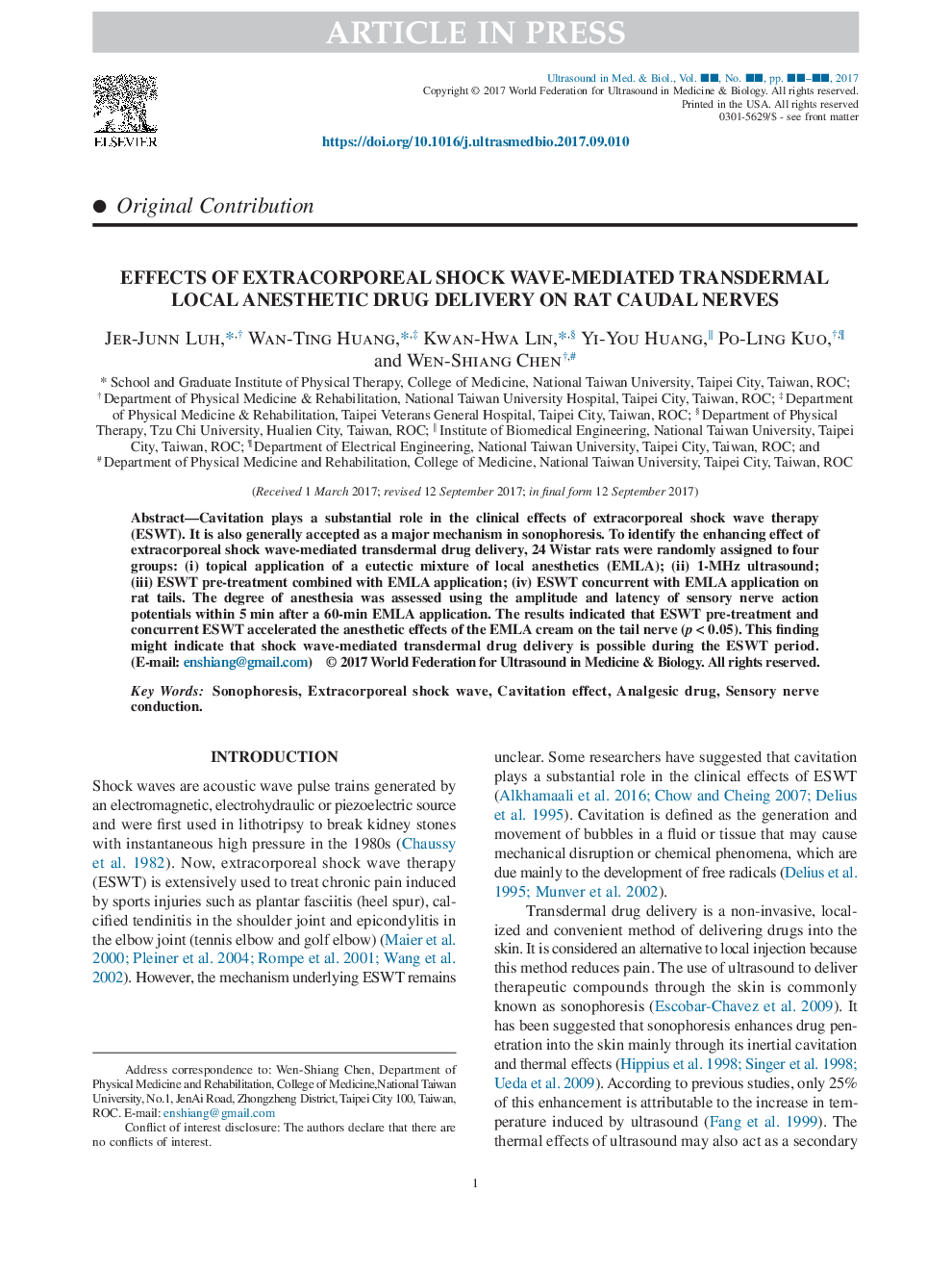| Article ID | Journal | Published Year | Pages | File Type |
|---|---|---|---|---|
| 8131426 | Ultrasound in Medicine & Biology | 2018 | 9 Pages |
Abstract
Cavitation plays a substantial role in the clinical effects of extracorporeal shock wave therapy (ESWT). It is also generally accepted as a major mechanism in sonophoresis. To identify the enhancing effect of extracorporeal shock wave-mediated transdermal drug delivery, 24 Wistar rats were randomly assigned to four groups: (i) topical application of a eutectic mixture of local anesthetics (EMLA); (ii) 1-MHz ultrasound; (iii) ESWT pre-treatment combined with EMLA application; (iv) ESWT concurrent with EMLA application on rat tails. The degree of anesthesia was assessed using the amplitude and latency of sensory nerve action potentials within 5âmin after a 60-min EMLA application. The results indicated that ESWT pre-treatment and concurrent ESWT accelerated the anesthetic effects of the EMLA cream on the tail nerve (pâ<â0.05). This finding might indicate that shock wave-mediated transdermal drug delivery is possible during the ESWT period.
Keywords
Related Topics
Physical Sciences and Engineering
Physics and Astronomy
Acoustics and Ultrasonics
Authors
Jer-Junn Luh, Wan-Ting Huang, Kwan-Hwa Lin, Yi-You Huang, Po-Ling Kuo, Wen-Shiang Chen,
